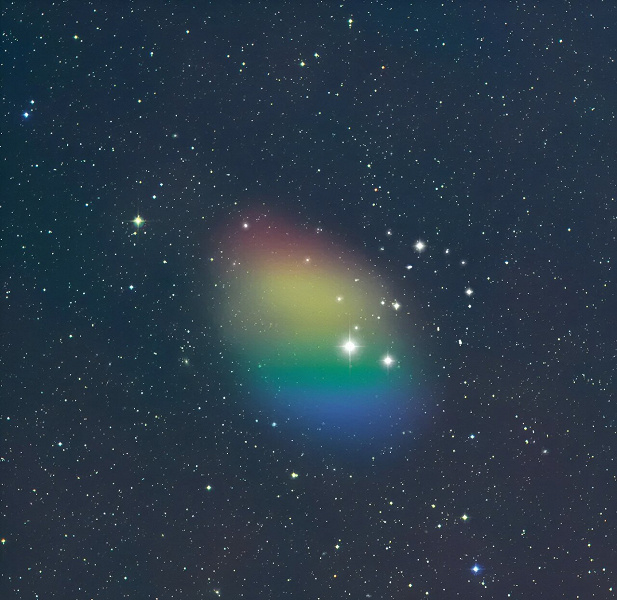Scientists have discovered a galaxy that appears to have no stars, but is largely filled with dark matter
Astronomer Karen O'Neill explains: «We know that this is an incredibly gas-rich galaxy. It probably does not exhibit star formation because its gas is too rarefied».
Having discovered J0613+52, scientists encountered an unusual phenomenon. During their work, they surveyed the sky to study low surface brightness galaxies, but the new object was not included in the original plans. O'Neil says: «Green Bank was accidentally directed to the wrong coordinates and discovered this new and unknown galaxy». There are no other galaxies around J0613+52 within a radius of 112 parsecs, making it an isolated exception.
What was surprising was that J0613+52 has similar mass and gas content characteristics to ordinary spiral galaxies. However, the absence of stars in it poses a real mystery. Dwarf galaxy J0613+52 — This is a different type from the usual spiral and elliptical galaxies with an unusual shape and reduced luminosity. According to O'Neill, such objects are rare and may be associated with an abundance of dark matter: «J0613+52 may contain up to 95% dark matter».
The lack of stars in J0613+52 is due to the characteristics of neutral hydrogen gas, which is too rarefied and chaotically distributed. Low surface brightness galaxies have weak gravity, which makes it difficult for them to form stars on their own. They undergo evolution with difficulty, spending a lot of time transforming gas into stars. O'Neil says: «J0613+52 appears to be in an underdeveloped state. This may be our first discovery of a nearby galaxy consisting of primordial gas. In addition, the galaxy is located at a sufficient distance from neighboring galaxies so that they cannot influence it gravitationally, limiting possible collisions and mergers, which also causes the absence of star formation.
The discovery of J0613+52 expands knowledge about dark matter. While it's impossible to observe dark matter itself, scientists can measure its gravitational effects. Dark matter appears to play a leading role in the formation regions of dwarf galaxies, providing astronomers with an estimate of the distribution of this component in the Universe.
Dark matter may also explain why galaxies like J0613+52 interact with other galaxies in a very limited way. O'Neill points out: “Dark matter shells act as “gatekeepers” separating galaxies. Lack of “contact” can prevent the formation of giant stars through collisions. These are the stars — one of the first to be formed. At the end of their lives they explode as supernovae and “populate” the environment with heavy elements necessary for the subsequent formation of stars and planets. J0613+52 and other similar galaxies lack such elements, which is an additional hint as to the reasons for the lack of star formation».
This is not the first time that «dark» galaxies like J0613+52. In 2005, astronomers discovered the galaxy VIRGOH1 21 in the Virgo Cluster, which is also thought to be composed primarily of dark matter. However, there are different opinions regarding its nature. It is possible that VIRGOH1 21 is part of a tidal tail of gas and debris created by an ancient galactic collision. In this regard, additional observations of J0613+52 are important for a more complete understanding of the nature of such galaxies.
More advanced tools are needed to further study J0613+52 and its characteristics. In the near future, the ALPACA (Advanced L-Band Phased Array Camera for Astronomy) L-band camera will be installed on the Green Bank radio telescope. The launch of ALPACA will expand the telescope's field of view, allowing astronomers to study J0613+52 and other low surface brightness galaxies in greater depth.

